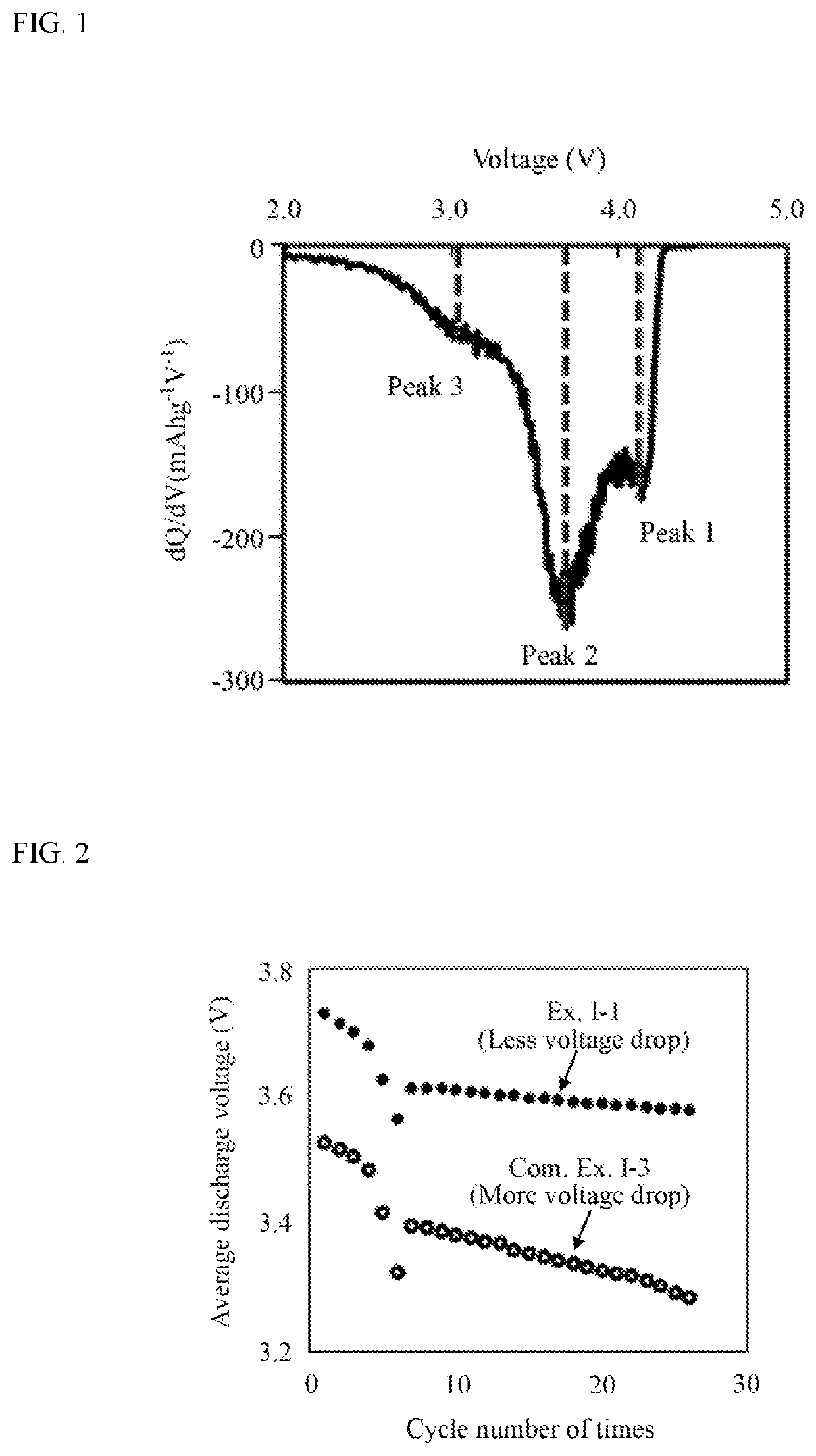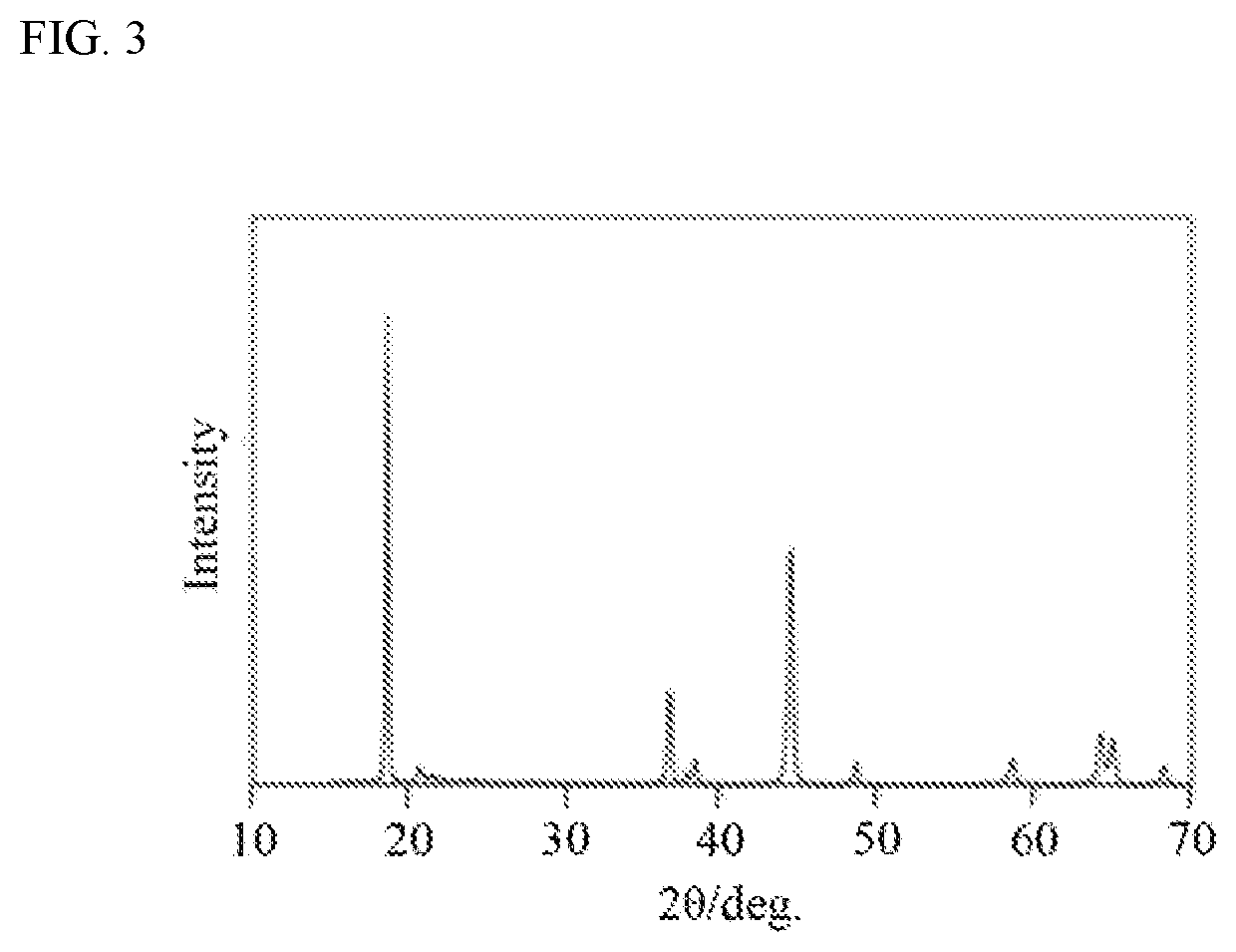Positive electrode active material and method for producing same, and non-aqueous electrolyte secondary battery using same
a technology of active materials and active materials, which is applied in the direction of electrochemical generators, cell components, and nickel compounds, can solve the problems of poor heat stability and cycle properties, electrode active materials that cannot fully satisfy cycle properties and rate properties, and active materials that cannot fully satisfy energy density and other problems, to achieve the effect of high energy density retention, less voltage drop, and high energy density
- Summary
- Abstract
- Description
- Claims
- Application Information
AI Technical Summary
Benefits of technology
Problems solved by technology
Method used
Image
Examples
example i-1
[0211]Were prepared 0.1 mol / L of a nickel sulfate aqueous solution and 0.1 mol / L of a manganese sulfate aqueous solution. The nickel sulfate aqueous solution and the manganese sulfate aqueous solution were mixed with each other so that a molar ratio of nickel and manganese was adjusted to Ni:Mn=0.35:0.65 to give a mixture solution. Was prepared 1 mol / L of a sodium carbonate aqueous solution. To a sealed type reaction vessel was supplied 8 L of water, and a temperature inside the reaction vessel was kept at 40° C. under nitrogen gas circulation. Drops of the mixture solution and the sodium carbonate aqueous solution were continuously put to the reaction vessel with stirring at a speed of 5 mL / min. Simultaneously drops of the sodium carbonate aqueous solution were put to the reaction vessel so that a reacting solution in the reaction vessel had pH of 8.00 (±0.01). During reaction of the reacting solution, only a filtrate was removed from a reaction system by using a concentration vess...
example i-2
[0217]Powder of a coprecipitated precursor was synthesized in the same manner as in Example I-1 except for the following procedures. That is, the nickel sulfate aqueous solution, a cobalt sulfate aqueous solution and the manganese sulfate aqueous solution were mixed with each other so that a molar ratio of nickel, cobalt and manganese was adjusted to Ni:Co:Mn=0.35:0.05:0.60 to give a mixture solution.
[0218]It was found that the coprecipitated precursor was a carbonate precursor compound represented by the formula: (Ni0.35 Co0.05Mn0.60)CO3. Lithium carbonate powder was weighed so that a molar ratio of lithium to the coprecipitated precursor was adjusted to Li / (Ni+Co+Mn)=1.25, and the lithium carbonate powder was fully mixed with the coprecipitated precursor to give a mixture. The mixture was subjected to calcination under the oxidizing atmosphere at 850° C. for 5 hours in the electric furnace to give a positive electrode active material.
[0219]A coin cell was assembled in the same man...
example i-3
[0220]Powder of a coprecipitated precursor was synthesized in the same manner as in Example I-1 except for the following procedures. That is, the nickel sulfate aqueous solution, the cobalt sulfate aqueous solution and the manganese sulfate aqueous solution were mixed with each other so that a molar ratio of nickel, cobalt and manganese was adjusted to Ni:Co:Mn=0.310:0.055:0.635 to give a mixture solution.
[0221]It was found that the coprecipitated precursor was a carbonate precursor compound represented by the formula: (Ni0.310Co0.055Mn0.635)CO3. Lithium carbonate powder was weighed so that a molar ratio of lithium to the coprecipitated precursor was adjusted to Li / (Ni+Co+Mn)=1.375, and the lithium carbonate powder was fully mixed with the coprecipitated precursor to give a mixture. The mixture was subjected to calcination under the oxidizing atmosphere at 880° C. for 5 hours in the electric furnace to give a positive electrode active material.
[0222]A coin cell was assembled in the ...
PUM
| Property | Measurement | Unit |
|---|---|---|
| molar ratio | aaaaa | aaaaa |
| voltage | aaaaa | aaaaa |
| crystallite size | aaaaa | aaaaa |
Abstract
Description
Claims
Application Information
 Login to View More
Login to View More - R&D
- Intellectual Property
- Life Sciences
- Materials
- Tech Scout
- Unparalleled Data Quality
- Higher Quality Content
- 60% Fewer Hallucinations
Browse by: Latest US Patents, China's latest patents, Technical Efficacy Thesaurus, Application Domain, Technology Topic, Popular Technical Reports.
© 2025 PatSnap. All rights reserved.Legal|Privacy policy|Modern Slavery Act Transparency Statement|Sitemap|About US| Contact US: help@patsnap.com


